Unpacking Michael Burry’s Q4 2024 Portfolio: Strategic Shifts and Performance Puzzles
Hello, fellow investors! Michael Burry, the legendary figure immortalized in “The Big Short,” continues to captivate the financial world with his unconventional calls and strategic portfolio adjustments. Known for his deep-dive research and contrarian bets, Burry’s moves are always closely watched, offering valuable insights into how a seasoned, value-oriented investor navigates today’s complex markets. In this article, we’re going to delve into the details of Scion Asset Management’s holdings as reported in the Q4 2024 13-F filing. What shifts did we see? What might they tell us about his market outlook? And how did some of those key positions perform in the early part of 2025? Let’s uncover the story hidden within the data.
A Snapshot of Scion’s Holdings at the Close of 2024
Every quarter, institutional investment managers with over $100 million in assets under management are required to file a Form 13-F with the U.S. Securities and Exchange Commission (SEC). This report provides a snapshot of their long equity positions (stocks) held on the last day of the quarter. Think of it like a mandatory inventory list for professional money managers. For us, it’s a window, albeit a slightly delayed one, into the minds and portfolios of influential investors like Michael Burry.
The filing for the fourth quarter of 2024 revealed that Scion Asset Management held a portfolio totaling **$77.436 million** across 13 different security positions as of December 31, 2024. This figure represents the market value of his reported long stock holdings on that specific date. It’s important to remember that 13-F filings do not disclose short positions, cash holdings, or other asset classes, so this number doesn’t tell the full story of the fund’s total assets or risk exposure. However, it gives us a solid foundation for analyzing his directional bets in publicly traded U.S. equities and ADRs (American Depositary Receipts).
Looking at the list of 13 holdings, a clear theme persisted from previous quarters: a significant concentration in a few key names. While we saw some important changes (which we’ll discuss shortly), the top positions continued to exert a dominant influence on the overall portfolio structure. This concentration is characteristic of value investors like Burry, who prefer to make substantial bets on a limited number of opportunities where they have high conviction, rather than spreading capital thinly across many stocks.
For the curious investor, understanding the nature of a 13-F filing is paramount. It’s not real-time data. The Q4 2024 filing became public 45 days after the quarter ended, meaning it was filed around mid-February 2025. This delay is a critical factor when trying to assess the *current* performance or *current* holdings of an investor based solely on this document. It tells us what they owned on December 31, 2024, but not what they did with those holdings throughout January, February, or March of 2025. Why is this lag significant? Because markets are dynamic! Prices change daily, and savvy managers like Burry may make adjustments frequently. Keep this limitation in mind as we analyze the data.
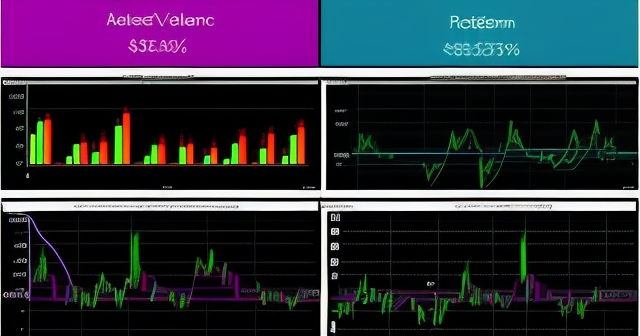
| Company Name | Stock Ticker | Portfolio Percentage |
|---|---|---|
| Alibaba Group Holdings | BABA | 16.43% |
| Baidu Inc. | BIDU | 13.61% |
| JD.com Inc. | JD | 13.43% |
The Persistent China Bet: Tech Giants Remain Top Holdings (with Adjustments)
A defining characteristic of Michael Burry’s portfolio in recent periods has been a notable exposure to Chinese technology companies. This theme continued into Q4 2024, although the details within the theme evolved. The top three positions by allocation remained deeply rooted in this sector:
- Alibaba Group Holdings (BABA): Constituting **16.43%** of the reported portfolio value.
- Baidu Inc. (BIDU): Representing **13.61%** of the reported portfolio value.
- JD.com Inc. (JD): Accounting for **13.43%** of the reported portfolio value.
Combined, these three stocks made up over 43% of the $77.4 million portfolio value reported on December 31, 2024. This level of concentration in a specific sector, particularly one facing ongoing geopolitical and regulatory uncertainties like Chinese tech, speaks volumes about Burry’s conviction in the underlying value he sees in these companies. It suggests he believes they are trading at prices significantly below their intrinsic worth, potentially undervalued due to macro risks and investor sentiment rather than fundamental business issues. This aligns perfectly with a value investing approach – buying “dollars for fifty cents.”
But simply holding onto these positions isn’t the full story. The strategic adjustments within this sector are equally, if not more, insightful. While Baidu holdings remained unchanged in Q4 2024 compared to the prior quarter, Michael Burry made notable reductions in his positions in the other two giants:
- Alibaba (BABA): Holdings were reduced by **25%**.
- JD.com (JD): Holdings were reduced by a more significant **40%**.
Simultaneously, a new position was added within the broader Chinese tech/e-commerce space: **Pinduoduo (PDD)**. While its allocation was smaller compared to BABA, BIDU, and JD, its inclusion suggests a selective rather than wholesale exit from the sector. Perhaps Burry saw relatively better value or growth prospects in Pinduoduo compared to the others at that specific time, or maybe he was rotating capital within the sector to manage concentration risk differently.
What could these moves signify? Reducing exposure to Alibaba and JD.com could indicate several possibilities:
- Taking some profits after a period of potential gains.
- Slightly reducing overall portfolio concentration or risk tied to China.
- A view that while still undervalued, BABA and JD were less compelling than other new opportunities (like PDD or positions in other sectors).
- Responding to specific company or sector developments that are not immediately obvious to outside observers.
Regardless of the precise motivation, these actions demonstrate that Burry is not simply buying and holding passively. He is actively managing his positions, trimming winners or reducing exposure when circumstances or perceived value changes, which is a hallmark of experienced portfolio management.
Beyond Tech: Diversification into Healthcare, Consumer, and Specialty Sectors
While Chinese tech dominated the top spots in terms of allocation percentage, a closer look at the Q4 2024 filing reveals a strategic move towards diversification across other sectors. Michael Burry initiated several new positions and increased exposure in areas seemingly distinct from e-commerce giants. This is crucial because it suggests a broader search for value across the market, rather than being solely focused on one theme.
New investments and increased exposure were particularly visible in:
- Healthcare: New positions included **Molina Healthcare (MOH)**, **HCA Healthcare (HCA)**, and **Oscar Health (OSCR)**. Estee Lauder (EL), though often classified as Consumer Staples or Discretionary, also has ties to wellness and personal care, sometimes blurring lines depending on classification systems.
- Consumer Discretionary/Staples: A new position in **Estee Lauder (EL)**, and smaller new positions in **V.F. Corp. (VFC)** and **Canada Goose (GOOS)**.
- Life Sciences/Technology: A new position in **Bruker Corp. (BRKR)**.
- Insurance: An increased stake in **American Coastal Insurance (ACIC)**.
- Other Specialties: A new position in **Magnera Corp. (MAGN)**.
What does this diversification tell us? Several potential narratives emerge:
- Balancing Risk: Adding positions in sectors like healthcare and consumer staples/discretionary can act as a hedge against volatility in the more speculative tech sector. These sectors often have different market drivers and can provide more stable earnings streams.
- Seeking Value in Overlooked Areas: Burry might perceive these companies or sectors as currently undervalued relative to their fundamentals or future prospects. Perhaps they have faced recent headwinds (supply chain, inflation, changing consumer habits) that he believes are temporary, creating a buying opportunity.
- Anticipating Economic Shifts: Positions in healthcare could reflect a view on demographics or specific healthcare trends. Consumer sector additions might suggest an expectation of consumer spending recovery or a belief in the long-term brand power of these companies despite short-term economic uncertainties.
Think of it like building a well-rounded team. While your star players might be in one position (like tech forwards), you need solid defenders (healthcare, staples) and versatile midfielders (specialty sectors) to navigate different game conditions. Burry’s Q4 2024 moves appear to be strengthening the defensive and diversified parts of his portfolio while selectively adjusting his core offensive lineup.
For you, as an investor learning these principles, this diversification strategy highlights the importance of not putting all your eggs in one basket, even if you have high conviction in a particular area. It’s about finding compelling opportunities across different industries and risk profiles.
Analyzing Performance Post-Filing: The February to April 2025 Snapshot
Now, let’s bridge the gap between the static snapshot of December 31, 2024, and the dynamic reality of the market in early 2025. While we cannot know Michael Burry’s *actual* performance or holdings after Q4 2024, we *can* analyze how the stocks he reported owning on December 31 performed in the subsequent months. This exercise provides insight into the potential impact of market movements on his disclosed positions, *assuming* he made no changes.
Let’s look at the performance of his top five reported holdings from December 31, 2024, through a mid-April point in 2025 (using dates like February 3rd to April 17th or April 21st from the data provided, which covers much of Q1 2025 and spills into Q2):
- Alibaba (BABA): According to the analysis provided, BABA was up **10.40%** between February 3 and April 17, 2025.
- Baidu (BIDU): Experienced a decline during this period.
- JD.com (JD): Also experienced a decline during this period.
- Estee Lauder (EL): Experienced a decline during this period.
- Molina Healthcare (MOH): Experienced a decline during this period.
This presents a mixed picture. Alibaba, the largest position, showed positive momentum in this specific timeframe, which is positive for the value of that holding. However, the declines in the other top holdings, including the other major Chinese tech names and the new healthcare/consumer plays like EL and MOH, would have partially offset those gains if the Q4 positions were held constant.
| Holding | Performance (%) |
|---|---|
| Alibaba (BABA) | 10.40% |
| Baidu (BIDU) | Declined |
| JD.com (JD) | Declined |
| Estee Lauder (EL) | Declined |
| Molina Healthcare (MOH) | Declined |
Based on the provided analysis, the collective value of these top five holdings decreased by **6.84% ($3.7 million)** between February 3 and April 21, 2025, assuming no changes were made from the Q4 2024 levels. This demonstrates the volatility inherent in these positions and the impact of market forces in just a few months. Factors like evolving market sentiment towards China, specific company news, and broader economic indicators would all play a role in these price movements.
However, there’s a crucial counterpoint within the provided data. Assuming no rebalancing, the value of these same top five holdings on April 21, 2025 ($50.4 million), was still **$2 million higher** than their value on December 31, 2024 ($48.4 million). This longer perspective, from the Q4 filing date through much of Q1 2025, suggests that despite the dip seen in the shorter Feb-April window, the initial positioning at year-end was potentially still beneficial over the slightly extended period.
What does this complexity tell us? It reinforces the idea that performance analysis is highly sensitive to the chosen timeframe and highlights the unpredictable nature of short-term market movements, even for stocks picked by a renowned investor. Volatility is not just a concept; it’s the daily reality of the market.
The Impact of Market Swings: Alibaba’s May 2025 Rally Example
To further illustrate the dynamic nature of portfolio value after the 13-F filing date, let’s consider a specific example mentioned in the data: a rally in Alibaba stock on May 12, 2025. The data notes that based on Burry’s *disclosed Q4 2024 holding* of 150,000 shares of BABA, a single day’s rally could potentially add a significant amount to the value of that stake.
Specifically, if the value of his BABA stake on May 9, 2025, was $18.8 million (again, based on the Q4 share count), and it increased to $20.02 million on May 12, this represents a potential gain of **$1.2 million** on that single holding in just one trading day. For a $77 million portfolio (based on Q4 data), a $1.2 million gain on one position in one day is substantial.
This example, occurring well into Q2 2025 and months after the Q4 filing deadline, dramatically highlights the primary limitation of using 13-F data for real-time performance assessment. While the Q4 filing told us he owned 150,000 shares on Dec 31, 2024, we have no way of knowing from that filing if he *still* owned 150,000 shares (or any shares!) on May 12, 2025. He could have sold half, bought more, or exited the position entirely in Q1 or early Q2 2025.
Therefore, while it’s interesting to calculate potential gains based on outdated data, it’s crucial to understand that this calculation does *not* represent Michael Burry’s actual performance on that day in May 2025. It only shows the leverage and potential impact of holding large positions in volatile stocks *if* those positions were maintained from the filing date. It’s like analyzing a photo of a runner at the starting line and trying to determine their exact position mid-race without seeing the race itself. You know where they started, but their current location depends on everything that happened after the photo was taken.
This exercise serves as a vital lesson for you as an investor: past performance (or hypothetical performance based on past data) is not indicative of future results or current portfolio status. The delay in public information is a fundamental aspect of tracking institutional investors.
Understanding the 13-F Limitation: Why Real-Time Performance Remains Elusive
Let’s reiterate and expand on the crucial limitation of 13-F filings. We’ve already touched upon the 45-day lag between the end of a quarter and the filing deadline. This lag is the primary reason we cannot determine an investor’s precise, real-time performance or current holdings based solely on these documents.
Consider the timeframe: The Q4 2024 filing reflects holdings as of December 31, 2024. This filing is made public around mid-February 2025. The next filing, Q1 2025, will show holdings as of March 31, 2025, and won’t be public until around mid-May 2025. This means that any analysis of portfolio performance or changes between January 1st and the filing date (mid-February) or even up to March 31st must make assumptions about the holdings reported in the *previous* filing (Q4 2024).
As we saw with the Alibaba example, market prices can move significantly in days, weeks, or months. An investor like Michael Burry, known for actively managing his portfolio, could have made numerous trades between December 31, 2024, and the date you read the news about his Q4 filing (mid-February 2025), let alone by the time the Q1 2025 filing becomes public (mid-May 2025).
What could happen in this blind spot?
- He could sell positions that have run up.
- He could buy more of positions that have dropped.
- He could exit positions entirely if his thesis changes.
- He could add completely new positions not seen in the Q4 filing.
- He could implement hedging strategies (like short positions or options) that are not reported on the 13-F.
Any of these actions would significantly alter the fund’s actual composition and performance compared to what the public data suggests.
For you, the aspiring investor, this teaches a critical lesson: do not blindly copy the trades of famous investors based on delayed filings. Use the filings as a source of *ideas* and *insights* into their thinking and research process, but always conduct your own due diligence and analysis before making any investment decisions. The 13-F is a historical document, not a live trading signal. Relying on old data for real-time action is like trying to navigate using a map from ten years ago – some landmarks might be the same, but the roads and construction zones will likely be very different!
Connecting the Dots: Q4 Moves and Michael Burry’s Investment Philosophy
Michael Burry’s Q4 2024 portfolio adjustments can be best understood when viewed through the lens of his well-established investment philosophy. He is a devout practitioner of **value investing**, deeply influenced by the teachings of Benjamin Graham and David Dodd, the fathers of value investing. What does this mean?
- Searching for Margin of Safety: Value investors seek stocks trading significantly below their calculated intrinsic value. The difference between the price and the estimated intrinsic value is the “margin of safety,” which provides a cushion against errors in analysis or adverse market events. Burry likely sees a wide margin of safety in his chosen positions, particularly in the Chinese tech sector after periods of price decline and negative sentiment.
- Contrarian Thinking: Burry is famously a **contrarian investor**. He is often willing to buy assets that are out of favor, disliked, or misunderstood by the broader market. His significant bets on Chinese tech at a time when many Western investors were wary fit this mold perfectly. He’s willing to endure short-term pain and criticism if he believes the long-term value proposition is compelling.
- Concentrated Bets: While he diversified in Q4 2024, his portfolio remains relatively concentrated compared to many other funds. This concentration reflects a belief that once he identifies truly undervalued opportunities, it makes sense to allocate significant capital to them to maximize potential returns. This requires high conviction and thorough research.
- Patience and Tolerance for Volatility: Value investing often requires significant patience. It can take a long time for the market to recognize and re-price an undervalued asset. Furthermore, contrarian positions can experience significant short-term volatility as market sentiment swings. Burry’s history suggests he is prepared to ride out these fluctuations, focusing on the long-term realization of value. The mixed performance of his Q4 holdings in early 2025 is a testament to this reality.
His Q4 2024 moves – reducing some Chinese tech while adding others and diversifying into different sectors – suggest a dynamic application of these principles. He might have trimmed BABA and JD because their prices had risen closer to his estimate of intrinsic value, reducing the margin of safety. Adding PDD might reflect a relative value opportunity within the same sector. The new positions in healthcare and consumer names could represent newly identified opportunities with attractive margins of safety in areas less correlated with his existing tech bets, or perhaps areas where he anticipates positive fundamental changes.
For you, the lesson here is that a successful investment strategy isn’t static. It requires constant evaluation of your holdings and the market landscape. Even if you identify as a value investor, portfolio composition needs to evolve as opportunities emerge and disappear, and as your view of risk and reward changes. Burry’s actions demonstrate a willingness to adapt his portfolio structure while staying true to his core philosophy.
The Broader Market Context: China, AI, and Economic Headwinds
Understanding Michael Burry’s Q4 2024 moves also requires considering the broader market context in which they occurred. The end of 2024 and early 2025 were characterized by several significant themes:
- China’s Economic and Regulatory Environment: Chinese stocks, particularly tech, had faced considerable pressure in recent years due to regulatory crackdowns, geopolitical tensions (perceived trade war risks), and concerns about China’s economic growth trajectory. While there were signs of potential stabilization or stimulus, uncertainty remained high. Burry’s continued, though adjusted, exposure suggests he saw past the near-term noise to the long-term potential of these companies within the vast Chinese market.
- Global Inflation and Interest Rates: Central banks worldwide were grappling with inflation, leading to elevated interest rates. This impacts company valuations (especially growth stocks) and consumer spending. Burry’s diversification into healthcare and potentially more stable consumer names might be a play on sectors less sensitive to immediate economic cycles or potentially benefiting from shifting consumer priorities or demographic trends in a higher-rate environment.
- The Rise of AI Hype: The market narrative in late 2024 and early 2025 was heavily dominated by enthusiasm for Artificial Intelligence (AI). This led to significant rallies in AI-related stocks, often pushing their valuations to very high levels. Burry’s focus elsewhere, particularly on undervalued “old economy” or out-of-favor tech names, could be interpreted as a classic contrarian move – avoiding the crowded, expensive trade (AI) and seeking value where others aren’t looking.
These macroeconomic and thematic currents provide the backdrop against which Burry’s specific stock selections and portfolio rebalancing make sense. He wasn’t investing in a vacuum; he was positioning his fund based on his analysis of how these larger forces would impact specific companies and sectors. His moves suggest a cautious stance on overt market hype (like AI) and a willingness to wade into areas perceived as risky (like China) if the valuation is compelling enough to compensate for those risks.
For you, observing this connection between macro trends and portfolio decisions is vital. Successful investing isn’t just about picking good companies; it’s also about understanding the broader economic and industry landscape and how it might affect your investments. What are the dominant narratives in the market right now? Where is capital flowing? Where is it being avoided? Asking these questions can help you identify potential areas of mispricing, both overvalued and undervalued.
Lessons for You: What Can We Learn from Burry’s Q4 2024 Moves?
So, beyond the specifics of which stocks Michael Burry bought or sold in Q4 2024, what are the enduring lessons we can take away to improve our own investment journey? Michael Burry’s approach offers several valuable principles:
- The Power of Deep Value Research: Burry spends countless hours digging into financial statements, market dynamics, and industry trends. His willingness to take significant positions in complex or out-of-favor areas stems from a belief that he has done his homework and found something valuable that others have missed. This underscores the importance of fundamental analysis – understanding the businesses you’re investing in.
- Embracing a Contrarian Mindset (When Appropriate): While not every investor is suited to be a full-blown contrarian, understanding the *value* of thinking independently is crucial. When a sector or stock is heavily sold off due to fear or temporary issues, that’s often when the most attractive long-term opportunities arise. Are you willing to look where others aren’t?
- Patience is a Virtue: The market doesn’t always agree with your assessment of value in the short term. Burry’s experience shows that even well-researched value investments can be volatile and take time to pay off. Cultivating patience and a long-term perspective is essential to avoid being whipsawed by short-term market noise.
- Risk Management is Key: While Burry runs a concentrated portfolio, his Q4 moves also showed an element of risk management – trimming positions that might have grown too large or diversifying into less correlated sectors. Understanding your own risk tolerance and position sizing is critical.
- Data Limitations Matter: We learned the hard way with the 13-F analysis that public data has limitations. Relying solely on delayed information can be misleading. Use filings for ideas, but always do your own current research before investing your hard-earned money.
Think of Michael Burry as a master chess player. He’s not just reacting to the last move; he’s planning several moves ahead, considering potential counter-moves, and assessing the board from a long-term perspective. His Q4 2024 adjustments were likely part of a larger, ongoing strategy, not isolated events.
As you build your own portfolio, whether you are a beginner investor or looking to deepen your understanding of market analysis, incorporating some of these principles – the commitment to research, the willingness to think independently, the importance of patience, and the awareness of data limitations – can significantly enhance your approach.
Looking Ahead: Anticipating the Q1 2025 Filing
Given the limitations of the Q4 2024 data and the dynamic market environment of early 2025, the financial community eagerly anticipates Scion Asset Management’s Q1 2025 13-F filing. This next report, due around mid-May 2025, will cover the period ending March 31, 2025.
The Q1 2025 filing will be crucial because it will provide insight into:
- What Michael Burry did with his holdings during the first three months of the year. Did he continue trimming his major tech positions? Did he add significantly to his new healthcare or consumer plays? Did he initiate completely new bets?
- How the performance experienced by the Q4 holdings (like the BABA rally or the declines in BIDU, JD, EL, MOH) might have influenced his actions. Did he buy the dip in positions that fell? Did he take more profits in positions that rose?
- How his view on the broader market, China, AI, and economic conditions evolved between December 31, 2024, and March 31, 2025.
Until that filing is released, any analysis of his *current* portfolio or *actual* performance since the start of the year remains speculative. We can analyze the potential impact on his Q4 holdings, as we’ve done, but we lack definitive information about his subsequent trades.
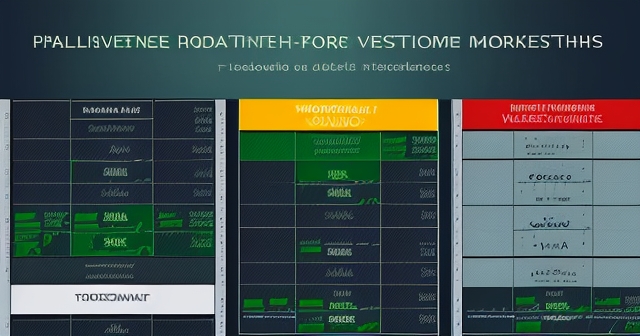
For investors tracking Burry, the upcoming Q1 2025 13-F will be the next piece of the puzzle, offering a more recent look at his positioning. It will help confirm or contradict assumptions made based on the Q4 data and provide fresh clues about where he sees value and risk in the market heading deeper into 2025.
Conclusion: Navigating Uncertainty with Conviction and Knowledge
Michael Burry’s Q4 2024 portfolio, as revealed by the 13-F filing, paints a picture of a skilled investor actively navigating a complex market landscape. While maintaining significant, though adjusted, exposure to Chinese technology, he strategically diversified into sectors like healthcare and consumer goods, balancing potential tech volatility with seemingly more defensive or recovery-oriented plays.
The analysis of how his Q4 holdings performed in early 2025 highlights the inherent volatility of his chosen sectors and reinforces the critical limitation of 13-F data – it’s a delayed snapshot, not a real-time feed. Performance snapshots based on outdated data can be misleading, as significant price movements and potential portfolio rebalancing can occur between the filing date and the date the information is made public.
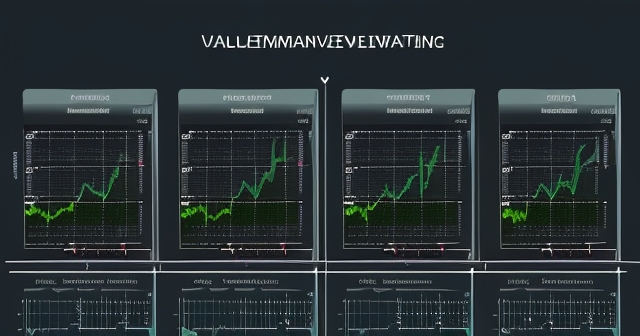
Ultimately, the true value of studying investors like Michael Burry lies not in trying to replicate their every trade based on old data, but in learning from their process, philosophy, and strategic thinking. His commitment to deep value research, his willingness to be contrarian, his patience in the face of volatility, and his thoughtful portfolio adjustments offer enduring lessons for investors at any stage of their journey.
As we look forward to the next filing, remember that successful investing is a marathon, not a sprint. It requires continuous learning, independent analysis, patience, and the ability to make informed decisions based on your own research and risk tolerance. By studying the moves of experienced investors like Michael Burry, we can gain valuable insights to apply to our own pursuit of long-term financial growth.
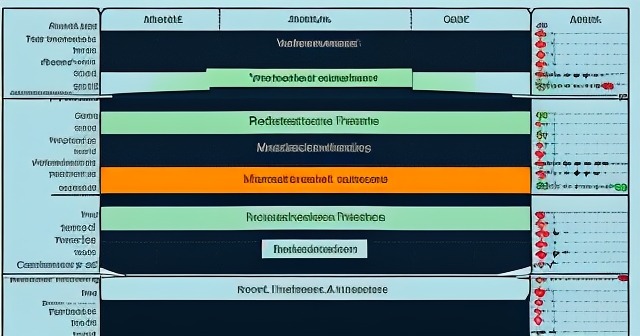
michael burry performanceFAQ
Q:What is the significance of a 13-F filing?
A:It provides insights into an investor’s long equity positions at the end of a quarter, but it’s delayed information and doesn’t reflect real-time trades.
Q:Why is there a lag in 13-F filings?
A:There is a 45-day period between the end of the quarter and when the filings become public, meaning the data is not up-to-date.
Q:How does market volatility affect Burry’s holdings?
A:Market volatility can lead to significant changes in the value of his positions, affecting portfolio performance in the short term despite long-term value strategies.
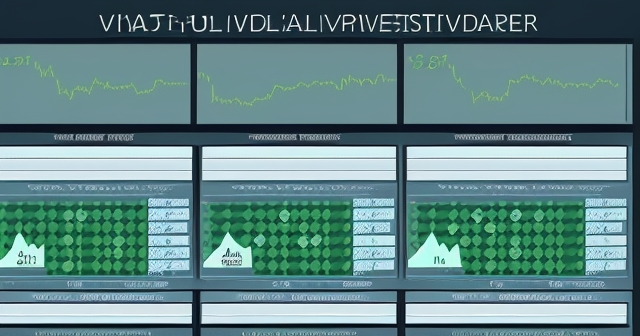
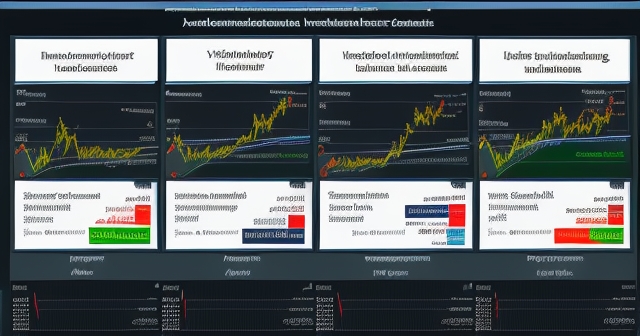
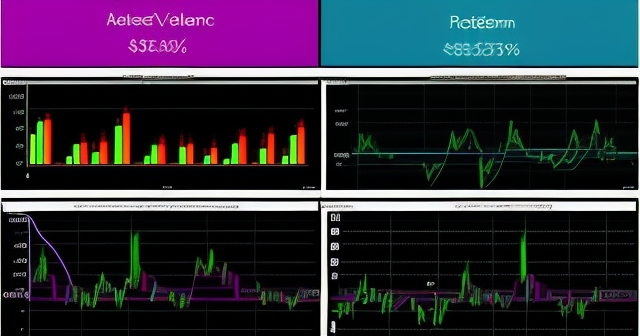
留言